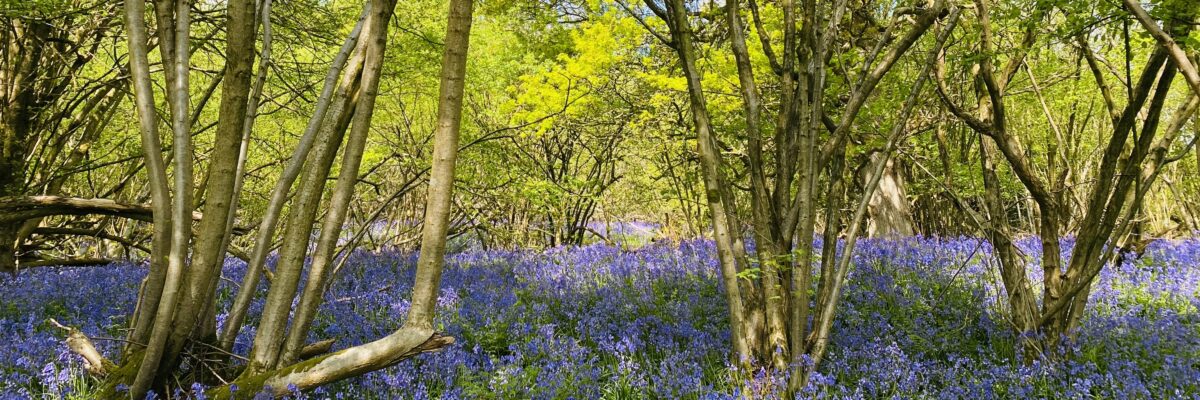A Stroll through Kent’s Woodlands – Liz Milne
18 February 2025
Making Space for Nature Project Manager Liz Milne takes a stroll through our much-loved Kent woodlands…
My go to places for nature in Kent have always been at the coastal fringes of the county or up high, on the downs. I love the openness and far-reaching views these both provide. So it may seem odd that I’m the one writing a blog about woodlands but these are increasingly becoming a favourite of mine to visit and no wonder given the delights they hold.
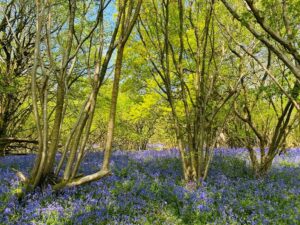
Bluebells at Ide Hill
Woodlands are home to an extraordinary wealth of wildlife and you can’t write such a blog without a shout out to our feathered friends. Woodland walks wouldn’t be the same without the song of a bird somewhere amongst the trees. From the dancing “chiff-chaff-chiff-chaff” of the bird with the same name, whose call mirrors its flitting movement through the trees, to the choral and fluting song of the aptly named Blackcap, there is always a plethora of sounds to listen out for. And it’s not just song you’ll hear – with our woodlands home to a number of Woodpeckers, there’ll also be the rat-a-tat-tat as these fabulous birds provide a percussive beat to accompany your stroll.
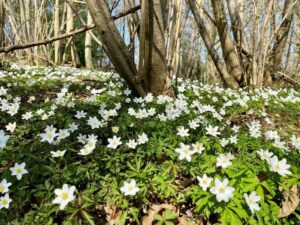
Wood anemones
Our woodland mammals can be a little more elusive in terms of spotting them, but there are many there all the same. Kent is a particular stronghold for one of England’s rarest mammals, the quintessentially cute Hazel dormouse who’s sleepy picture you will no doubt have seen many times even if you’ve not seen one in real life. Trees provide bats with shelter, with many species using their cavities and hollows, and offer a supply of food, through the wealth of insects that inhabit these leafy places. Deer are another woodland animal but are not always such a welcome visitor – in large numbers they can be quite destructive, eating and damaging young trees and shrubs and hindering the natural regeneration of these habitats.
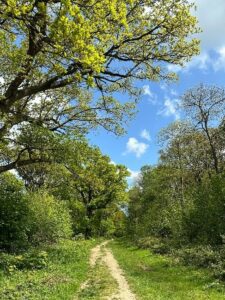
Hucking Estate
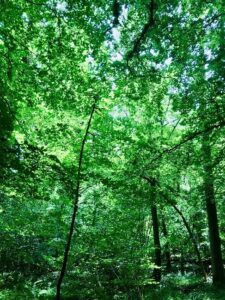
Ide Hill
Along woodland floors you can also find some real gems of plants and fungi. There’s no need for a hothouse visit to see orchids, with Early purple orchids to be found in Kent’s woodlands, alongside carpets of Wood anemones and Primroses. Woodland fungi are especially intriguing, with funny shapes and well appointed names – Jelly ear, Dead man’s fingers and Beefsteak fungus are all commonly found. And this variety of trees and plants also play host to a mind boggling number of insects, who exploit every nook and cranny.
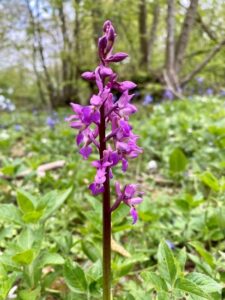
Early Purple Orchid At Queendown Warren Nature Reserve
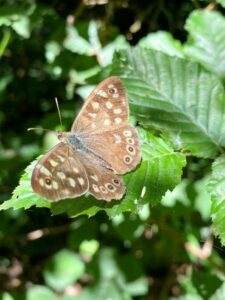
Speckled Wood Butterfly At Moat Farm, Shadoxhurst
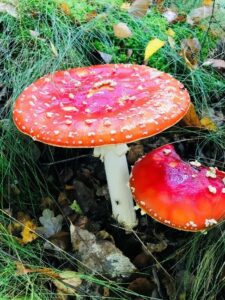
Fly Agaric At Shorne Woods Country Park
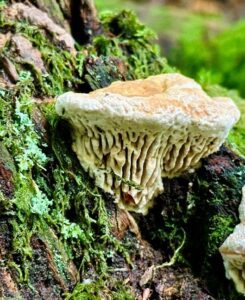
Oak Mazegill At Ide Hill
But perhaps the best known woodland species in our county is that of the bluebell. These iconic, delicate bells are a sign that spring has arrived and fragrant carpets fill many of our ancient woodlands throughout Kent.
Kent is home to a significant number of ancient woodlands, areas of woodland that have persisted since 1600, with prime examples including Ashenbank Wood, West Blean & Thornden Woods, and Kings Wood. Because they have been around for so long, these woodlands have developed special communities of plants and animals not found elsewhere and consequently are a very important habitat that is considered “irreplaceable”.
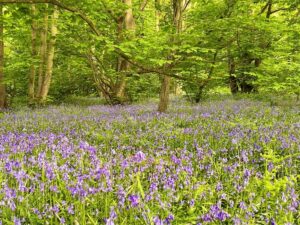
Ashenbank Ancient Woodland
Despite the delights a woodland can offer, for some they can also be a daunting place. Sometimes dark and enclosed, and a place to easily get lost in, it can feel a little intimidating to visit.
Fortunately in Kent there are some fabulous woodland sites, with waymarked and accessible trails that can allow new visitors to explore and experience the wonders these habitats offer. The country parks of Shorne and Trosley are especially welcoming and include facilities to make your visit even easier. Or how about Bedgebury National Pinetum, which also features the world’s largest collection of conifers.
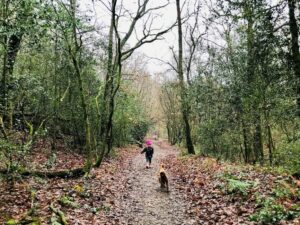
Winter walks at Ide Hill
As you travel through Kent, its easy to think that it is an exceptionally wooded county – at 17%, our average tree canopy cover is slightly above the national average. But distribution is not even, with 28-30% canopy cover in the west, compared to only 4-9% in the east of the county.
Trees and woodlands are important – not just for the amazing diversity of wildlife they support but because of the many services they also provide us, including carbon capture and storage, cleaning air, absorbing surface water and regulating temperatures in urban settings. And not to forget the health and wellbeing benefits that comes from a visit to them. It is therefore not surprising that woodland, trees and hedgerows are such a prominent part of the draft Local Nature Recovery Strategy as we seek to extend this habitat across the county and ensure that everyone has access to its delights and the environmental services it provides.
What should be our woodland flagship species?
We want to know what species you think best represents our Kent woodland habitats – is it the adorable hazel dormouse, the wise looking tawny owl, the armoured and robust stag beetle or the iconic English bluebell. Place your vote at kent.gov.uk/naturerecovery
Popular articles
Proposed approach for shortlisting priorities for nature recovery published
The Making Space for Nature project has been working with stakeholders to…
MS4N first milestone completed! Areas of importance for biodiversity mapped.
The MS4N project is delighted to have completed its first project milestone…
Haven’t been able to get to a workshop – you can still get involved!
There’s still one workshop of the pressures and priorities series left –…

